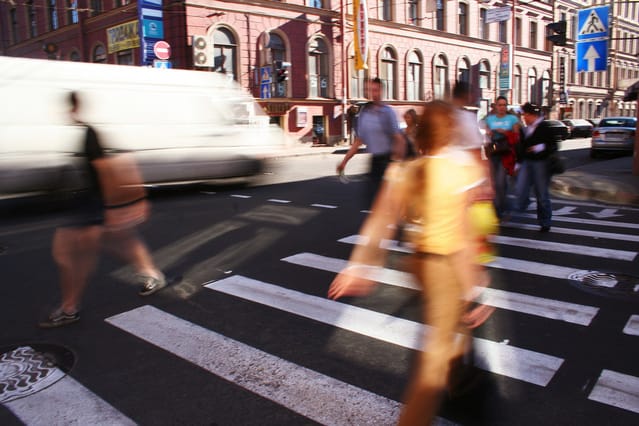Pedestrians are injured by motor vehicles every day, and who is at fault for these injuries isn’t always obvious. For example, sometimes pedestrians are hit by cars because they are acting irresponsibly, such as by getting into arguments in the street, while in other cases – and more commonly – pedestrians are injured or killed because they are trying to navigate spaces that simply aren’t built for them.
When we talk about whether a place is built with pedestrians in mind, we typically refer to it as being walkable, and experts even rank cities on whether they are navigable in this way. But, while walkability can reduce the likelihood of pedestrian injuries, we shouldn’t overlook the fact that cities that easily accommodate pedestrians are a health and safety issue in other ways, too.
Understanding Risk
Among the most common concerns surrounding pedestrian health and safety have to do with specific incidents of injury and death, especially when it relates to the death of children and older adults who have been hit by a vehicle. These two groups are not only considered particularly sympathetic from a media perspective but are at disproportionate risk of injury; according to the CDC, older pedestrians – those over age 65 – represent 20% of accident deaths. Repeat injuries and deaths among these populations can spur communities to act when other incidents have failed to do so.
Other common risk factors in pedestrian accidents include distracted drivers, those who are impaired by alcohol or other drugs, and drowsy or speeding drivers. Essentially, many of the same factors that can lead a driver to cause a multi-vehicle accident, also predispose them to harm pedestrians.
Walkability And Public Health
When a community is designed for walking with sidewalks, well-marked crosswalks, signage, and lighting, it reduces the likelihood that pedestrians will be struck by motor vehicles for a few reasons. First, pedestrians have dedicated space in towns with sidewalks versus those with inconsistent walkway access, and they’re more visible when they do step into the street. There’s a reason that most pedestrian-vehicle accidents happen outside of crosswalks.
Second, when towns are built to prioritize pedestrians, it changes traffic norms. While there will always be reckless individuals, the difference between towns with strong practices for protecting pedestrians and those that prioritize drivers is quite obvious when viewing driver behavior.
Other Concerns
People will always need to walk to get from one place to another, whether or not an area is designed with pedestrians in mind or not. And, in general, encouraging people to walk is actually a good thing. People who live in cities that are considered more walkable are also typically healthier because they will specifically opt to walk places instead of driving. Walkability also benefits the local environment, leading to improved air quality, as more people walk or take public transit.
Improved walkability can’t solve other major public health problems, and it can’t entirely address the challenges posed by reckless drivers. Still, when we pay more attention to whether communities are designed for pedestrians, we see improvements in health and safety. That’s worth doing, even if it won’t push pedestrian mortality rates to zero, and it should be on the agenda for every local government.













